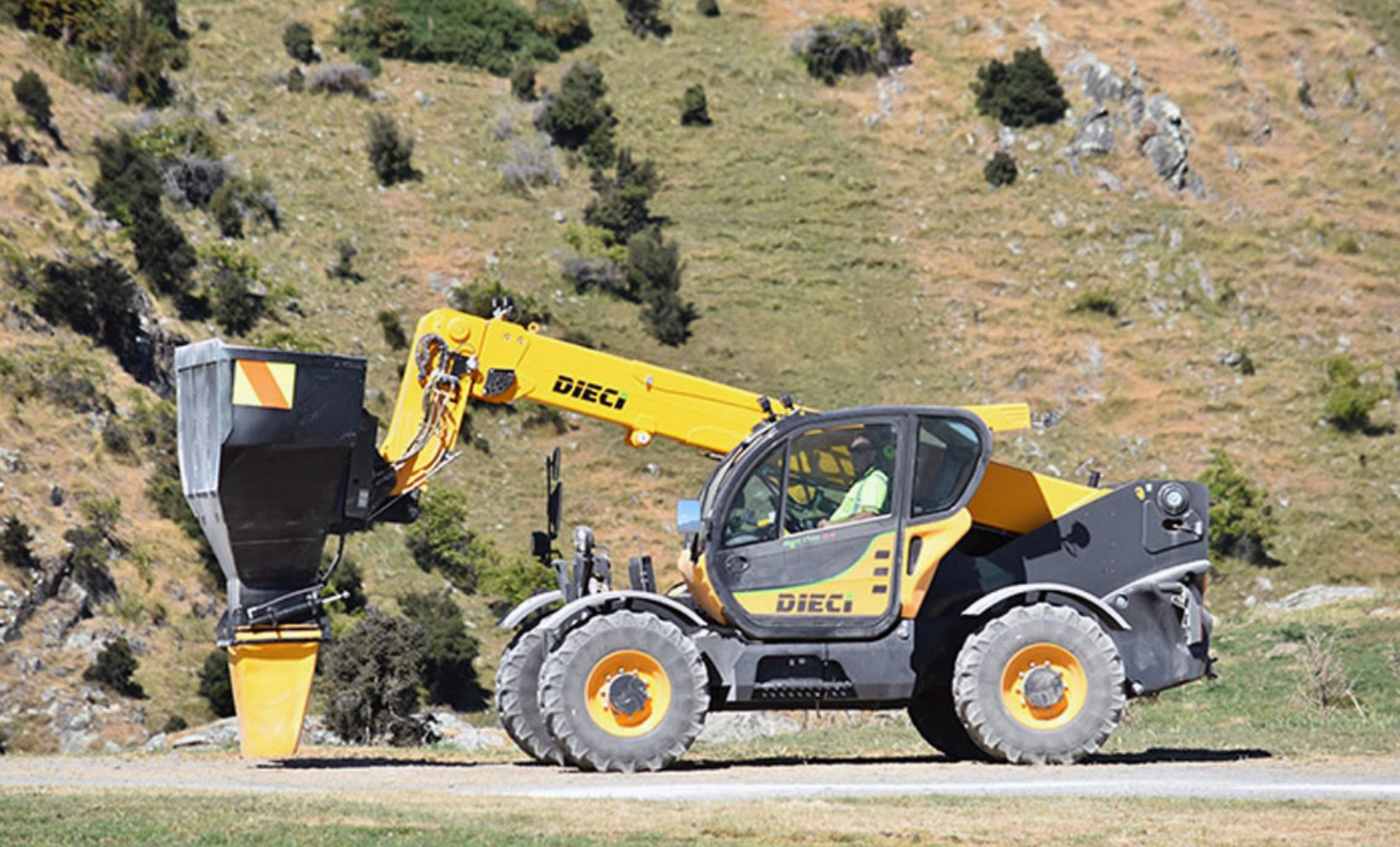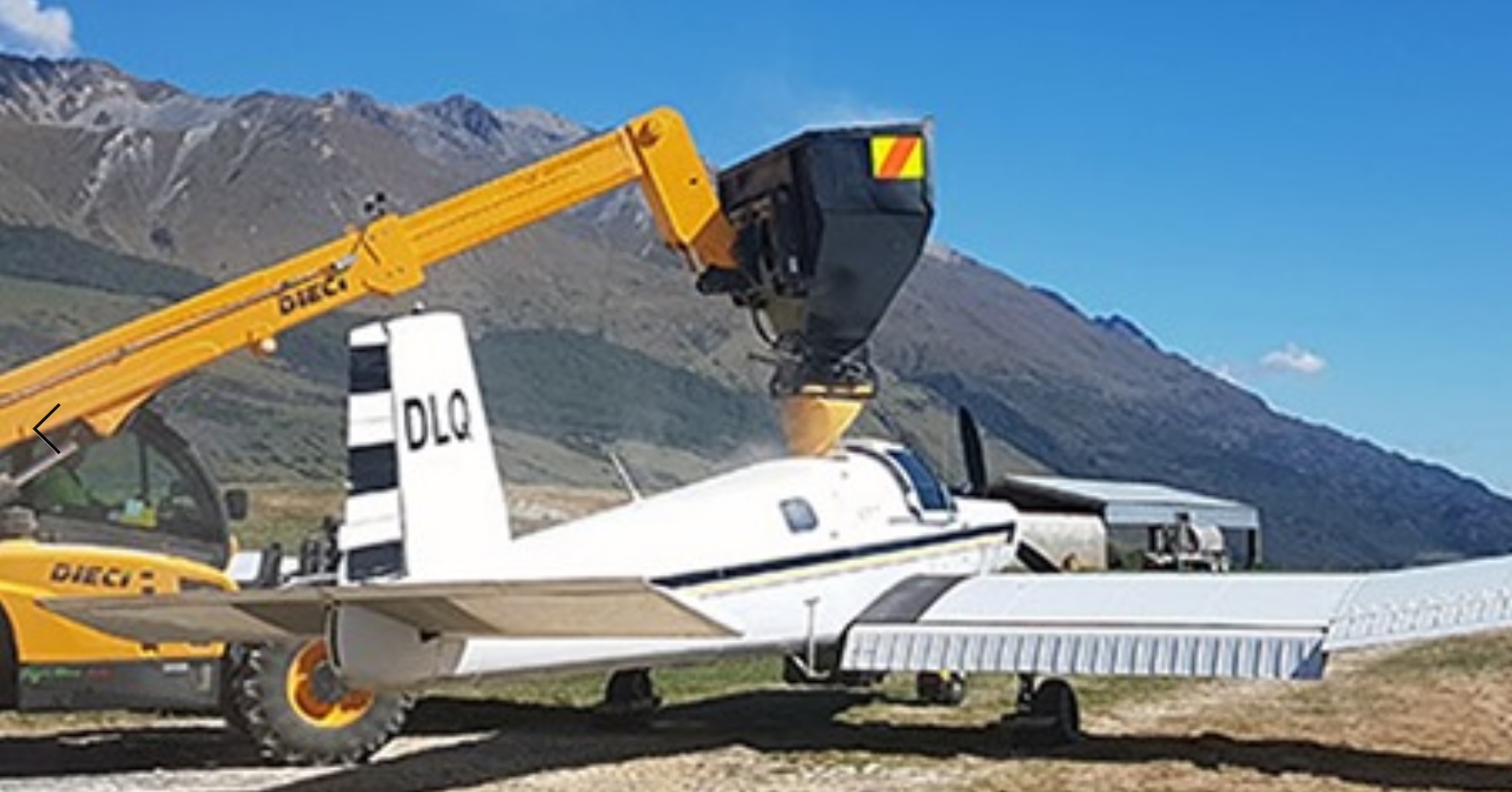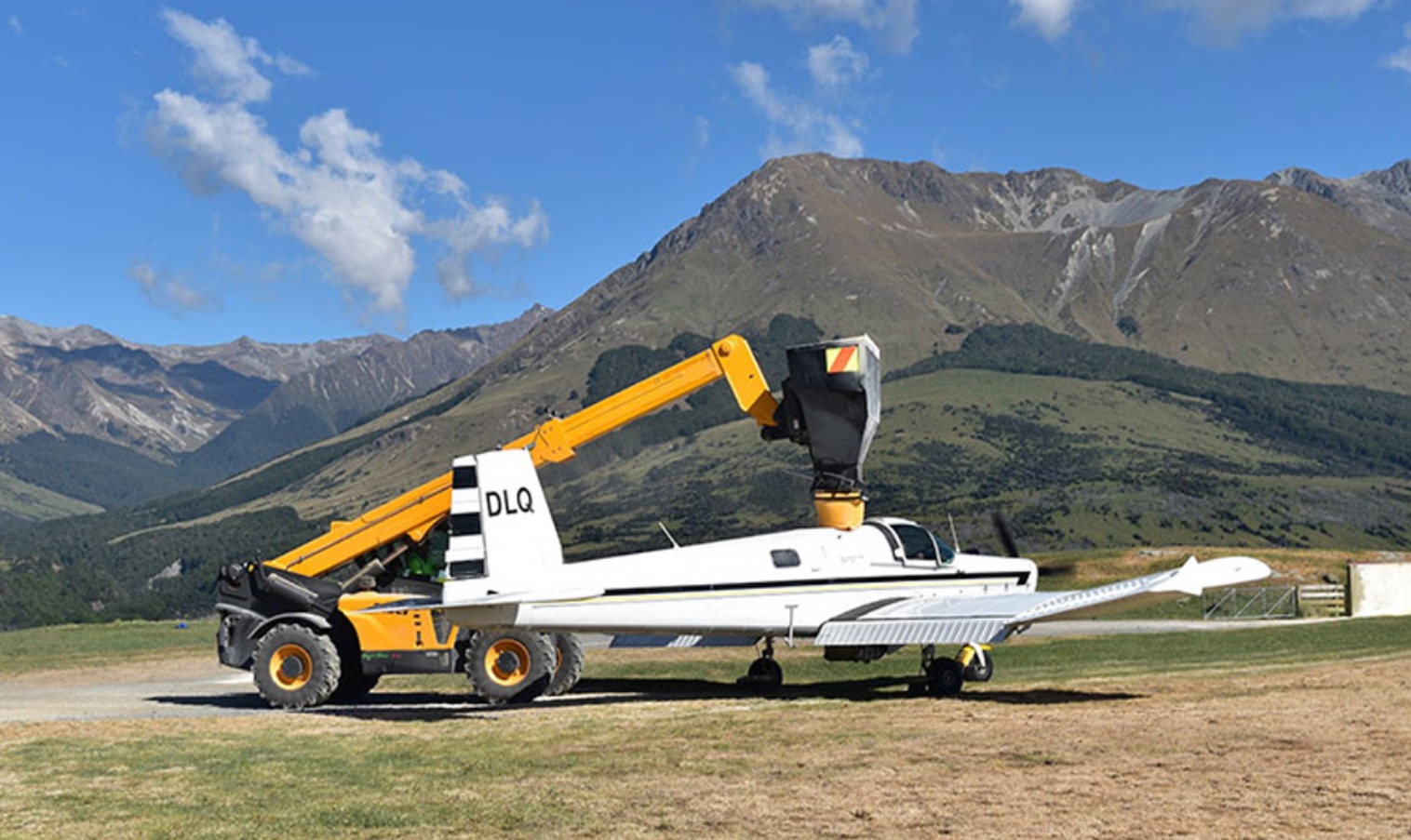The most appreciated quality of agricultural telehandlers is their versatility. To complement this inherent multifunctionality, at Dieci have also developed a series of accessories that enable telehandlers to carry out the most diverse tasks. This is why telehandlers are often used in polyculture, which by definition involves a variety of different tasks, and on farms with special requirements.

Aerial topdressing
New Zealand is a remarkable and beautiful country where agriculture and livestock remain traditional sources of income.
In many ways it is a country at the cutting edge, having been the first to experiment with aerial farming in 1906 when farmer John Chaytor used a hot-air balloon to sow lupin seeds over his family estate!
Post-war New Zealand was also the proving ground for the practice of topdressing, which uses aircraft to sow seeds and fertilize crops.
At the end of the Second World War, farmers started to fertilize their plots from above by taking advantage of the Royal New Zealand Air Force’s plentiful supply of leftover bombers and transport planes.
To date, over 112 aerial seeding and crop spraying companies operate daily in New Zealand with a fleet of over 230 aircraft of various types.
One of them is Southern Aviation, which uses an Agri Max 75.10 as its “ground crew” for rapidly resupplying aircraft with seeds or fertilizer.
The aircraft in question is a Fletcher FU-24 (an American ex-military plane successfully converted for agricultural use), which takes off and lands throughout the day from dawn to dusk, using all available daylight hours.
These planes work on multiple plots that are often miles apart, so rapid resupply is essential. Just like in Formula One, every second count

Loading maneuvers with Agri max telehandler
After landing, the pilot immediately turns the plane around so that it is ready to take off once refueled.
Agri Max, equipped with a special quick-release hopper, approaches the aircraft and uses its extending boom to position the hopper over the special loading hatch. Within a few seconds, one tonne of seed or fertilizer is transferred from the hopper to the plane.
Then, as soon as the Agri Max has moved a safe distance away, the plane takes off again and the Agri Max fills the hopper for the next load.
The procedure is guided by strict safety standards because one collision or leakage of material that interferes with the controls could have dangerous repercussions.

The Dieci telehandler was chosen for several reasons:
-
it is ideal for covering large distances, helped by its Vario System EVO2 transmission with four driving modes (Automotive, Loader, Creeper and ECO)
-
it has several accessories that make it multifunctional
-
it has an air-conditioned cabin with an extremely comfortable and safe working environment that makes long shifts onboard much more bearable.
The new Giugiaro Design cab is always highly appreciated by farmers who work in extreme conditions (cold, heat, dust, noise, etc.). In addition to its excellent air conditioning, the vehicle also has:
-
joystick built into the armrest
-
soundproofing
-
height- and tilt-adjustable steering wheel
-
electric windows
-
storage spaces
-
stereo system
-
sunscreen
-
ergonomic seat
-
sunroofs
-
high-visibility raised driver’s seat
-
high-efficiency windscreen wipers
-
two independent rearview mirrors
Source: Dieci Australia
 Copyright 2020 All rights reserved.
Copyright 2020 All rights reserved.